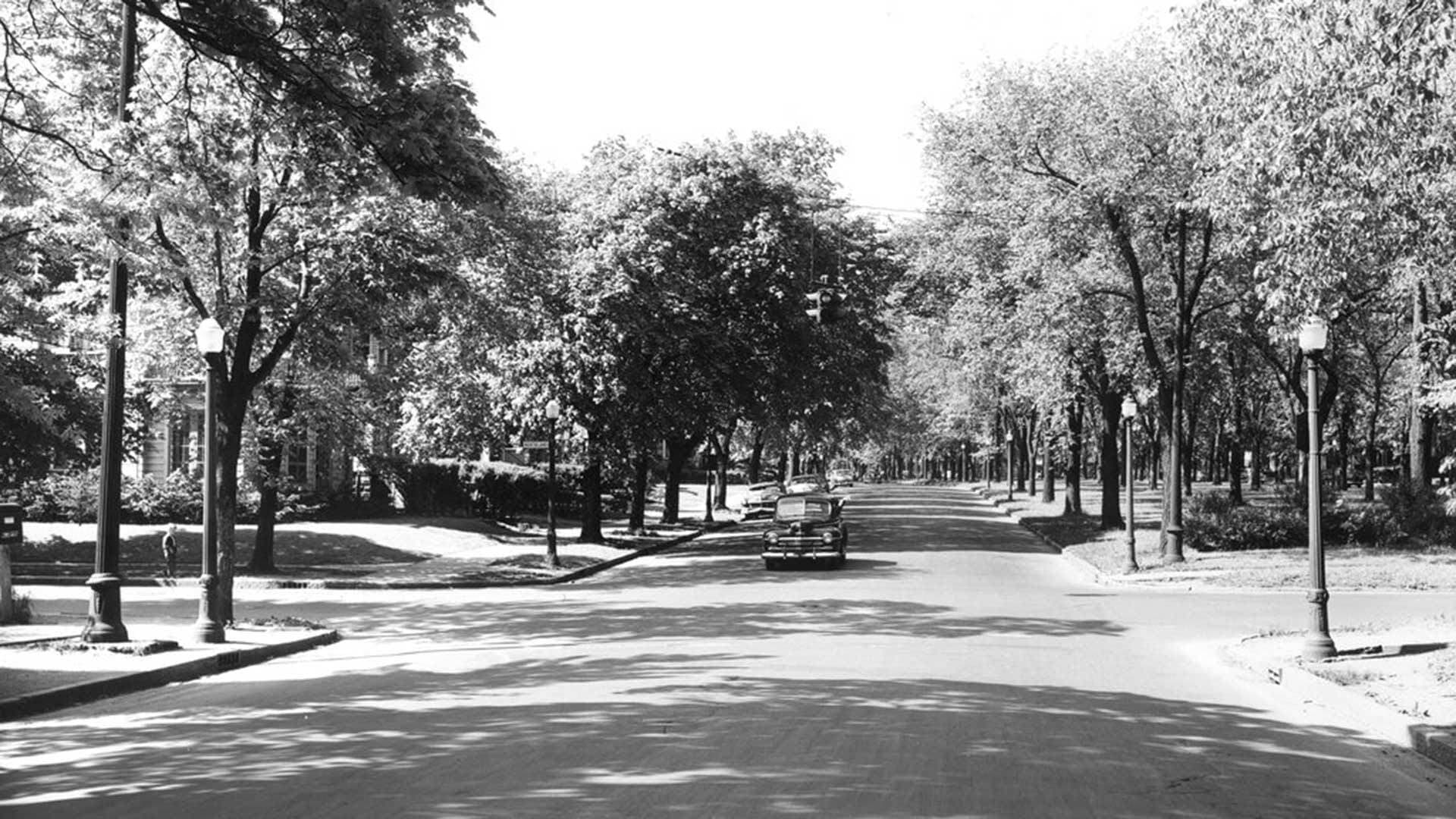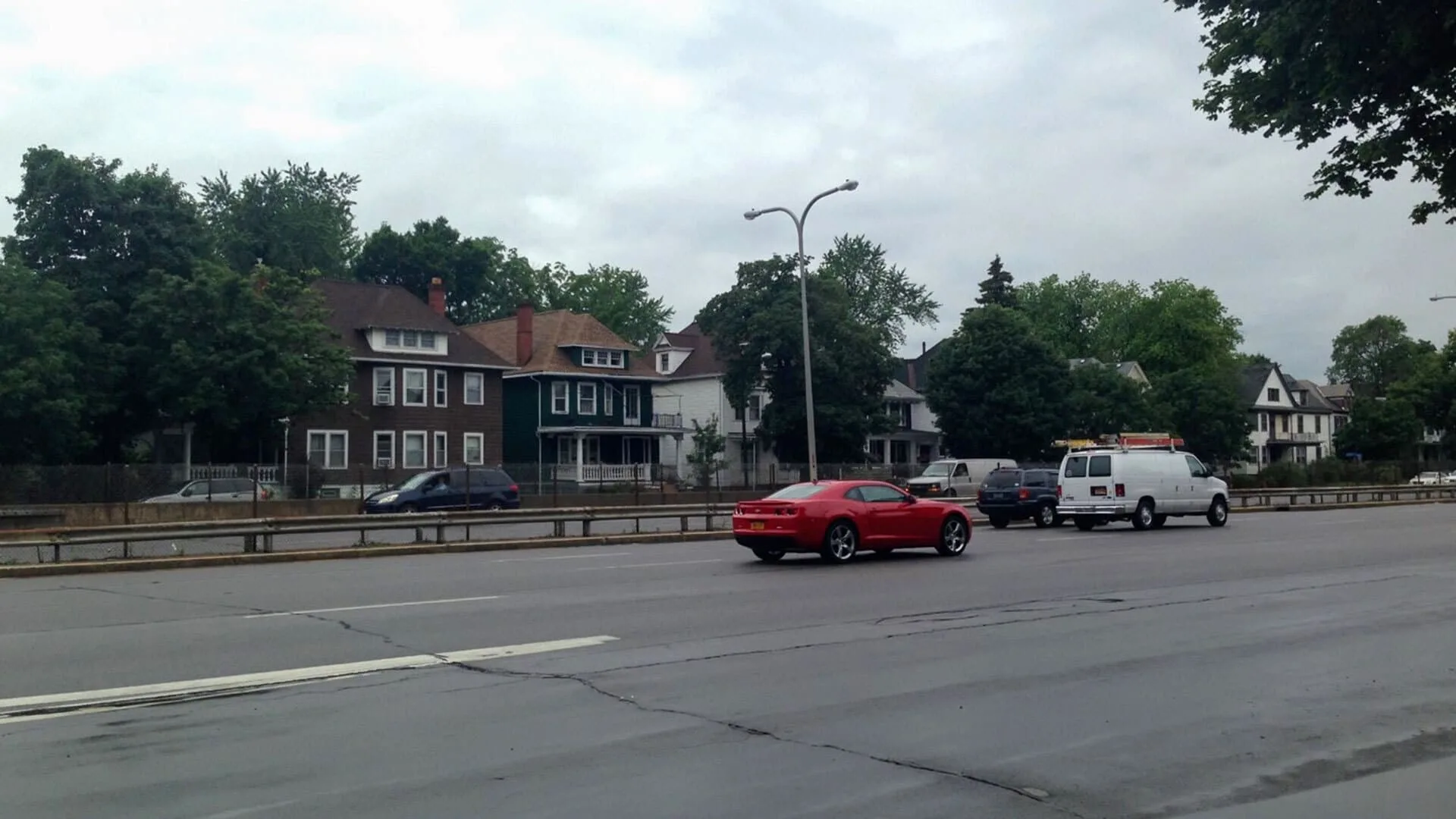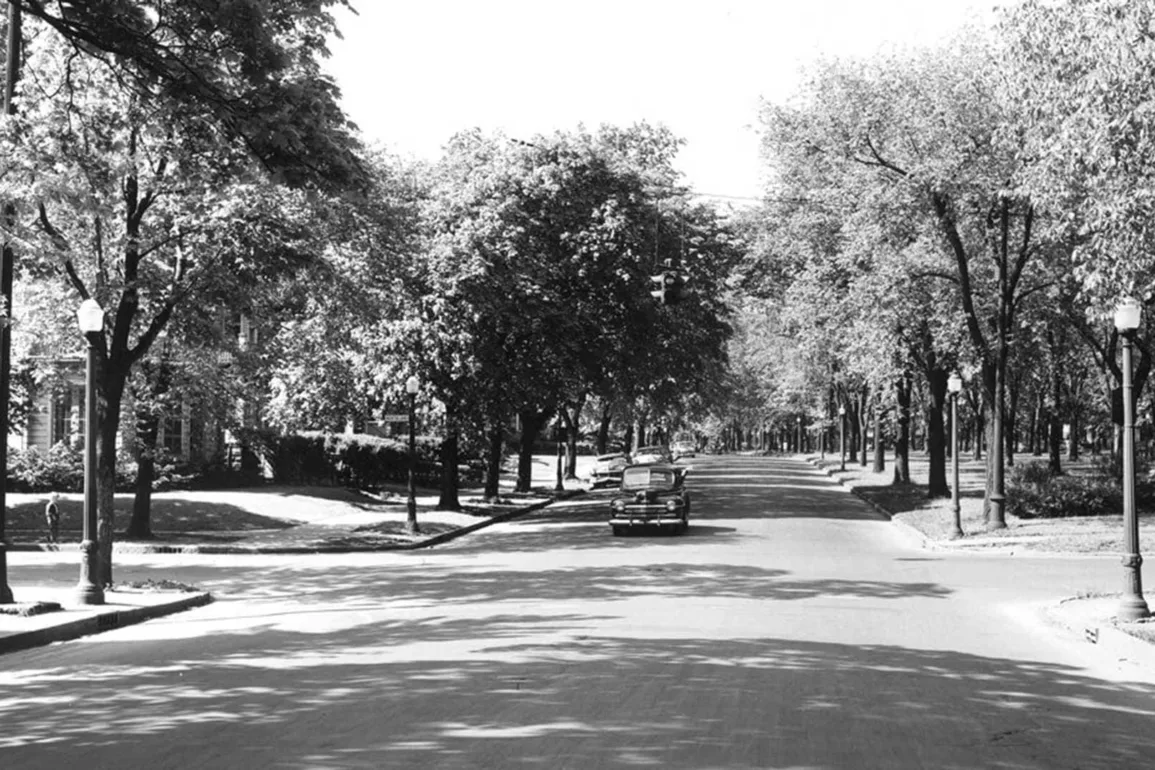
Humboldt Parkway in 1953 (Photo courtesy of the Buffalo History Museum)
“This is a story of environmental racism in one American city,” Roberts said. “But Buffalo isn’t the only story like this. It’s unique in the sense that it destroyed a green space treasure. But there were many other cities that also had these highways put into predominantly Black neighborhoods.”
[Read Roberts’ recent article on Buffalo’s civic loss in the Journal of Physical Activity and Health.]
In an interview, Roberts shared what sparked the book and explained how a project to restore some of the parkway’s beauty is also restoring hope for many of the city’s Black residents.
When and why did your family settle in Buffalo?
My maternal grandparents ended up in Buffalo in the late 1940s, like many other Black Americans of the time, because of the Great Migration. There were jobs up North. My grandfather was the New York state commissioner of desegregation and did a lot of work with the YMCA and camps in Buffalo. My grandmother was pretty much a stay-at-home mom during those early years, but she had her own little side hustle where she would do everyone’s hair where they lived, in what was called the projects or public housing. My mother, who is the youngest of three kids, grew up in Buffalo and still lives there today.
What was Humboldt Parkway like before its destruction?
My mother remembers walking the whole length of the parkway with her siblings. When I was a kid, she was always talking about it. It seemed so abstract to me because by the time I was born, all I saw was highways. She remembers how beautiful and peaceful it was with all of its elm trees and songbirds. It was stunning, flanked by historic homes with beautiful architecture. She loved seeing the seasons change, particularly in spring when the trees started to blossom and bloom again. Then, when the highway came, the noises and smells changed. Whereas before you could hear these wonderful songbirds and smell the flowers and the trees, now you just had a crater of a highway in the middle.
How did construction of the Kensington Expressway directly touch the lives of your family and other local Black families? What did they lose?
So many families and Black-owned businesses along the way were destroyed because they were either displaced or just disconnected. The area became completely bifurcated. You can’t walk across a highway like you can a park. It broke up the social cohesion. I have a photo that shows a nice little business where you could go and get a soda, like at a corner store. These kinds of businesses closed because you couldn’t walk to them anymore. Thousands of people were displaced because they lost their homes through eminent domain; New York state said, “Move—we are building this highway.” Not only were they forced to sell their houses to the state, probably at below-market rate, but then many were put in a high rise of public housing that the state built just for this purpose. They went from these old and beautifully architectured homes with a lawn and parkway in front to being put literally in a box.
There were also other downstream impacts of being exposed to constant highway traffic, the air pollution, the noise pollution, and then all of the health outcomes that you would get as a result, like asthma. The disparities in health outcomes along racial lines are significant. Over time, there’s been a complete decline of that area, which at one point was a really nice, prosperous area for many Black American families. One of the parkway neighborhoods, called Hamlin Park, became the first Black American middle class community in Western New York.

Kensington Expressway today (Photo courtesy of Buffalo Olmsted Parks Conservancy)
Your overarching topic in this book is environmental racism. What is it?
Environmental racism can be perpetuated in many different ways and forms to create interlocking patterns of disinvestment in housing, transportation, schools, parks and green spaces and other resources that create legacies of inequitable impacts. But to use Robert Bullard’s definition, it is when a policy, practice or action that differentially affects or disadvantages (where intended or unintended) individuals, groups or communities based on race. We will always have environmental burdens, but one group should not have to shoulder that burden and then incur all of the deleterious effects just because of their race or socioeconomic status. That’s when you get into environmental racism, particularly when it’s deliberate and intentional.
How is environmental racism affecting people of color nationwide, right now?
Environmental racism is a constellation of many different decisions related to urban planning: how we preserve green space, how we beautify neighborhoods, the setting or the sighting of certain buildings. Redlined communities were predominantly African American and communities of color. So again, those are the neighborhoods that were not beautified. They didn’t get the trees. They didn’t get the parks, and if they did, they were a lot smaller. Fast-forward to today, and you see how many of these areas that were historically redlined are five to 25 degrees hotter. Imagine a heat wave like the one we had a couple of days ago. It was 100 degrees. In some areas that were historically redlined in Baltimore, where I live, I’m sure it felt like 110 or 115 degrees. You see how these decisions made in the past still impact people today.
What’s being done to address this injustice in Buffalo?
The Biden-Harris administration recently awarded the city with a $55.6 million Reconnecting Communities Pilot grant program to build a new highway cap and tunnel over a portion of the Kensington Expressway that will connect several east-west roads. They’ll bring in some more trees. There’ll be bike lanes and sidewalks. They are trying to bring back aspects of Humboldt Parkway. They want to bring back opportunities for active recreation and transit. People started pushing for this almost immediately after the highway was built. So when the grant call came out, Buffalo was ready.
How do you foresee this new project improving the community?
I think if people abandon any ideas of it being the way it was, then we have the ability for some kind of healing in that area. Some people say, ‘Day late, dollar short.’ But then there are people who say, ‘This could still be a new tomorrow.’ This area will be revitalized. There’s something to be said when the federal government has enough confidence in the fact that they’re giving $55 million toward this restoration, and they believe in a sense of atonement. We can’t reverse it, but we can move forward.
Even my mom was saying, ‘I don’t know if I will be alive by the time they finish it, but I wish I could see it. It’s gonna be so nice.’ And I said, ‘Mom, you’ll be alive. They’re going to get it done.’ People are more hopeful than not. That’s why I’m excited to actually write this book, because I get an opportunity to talk to the people who lived it and hear their thoughts for tomorrow.


